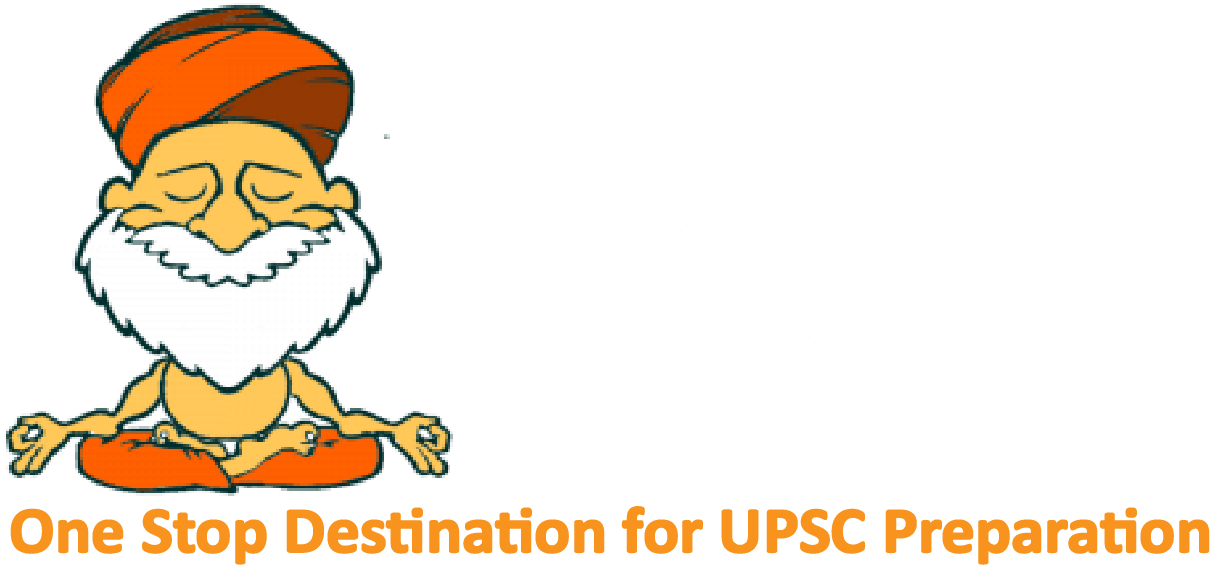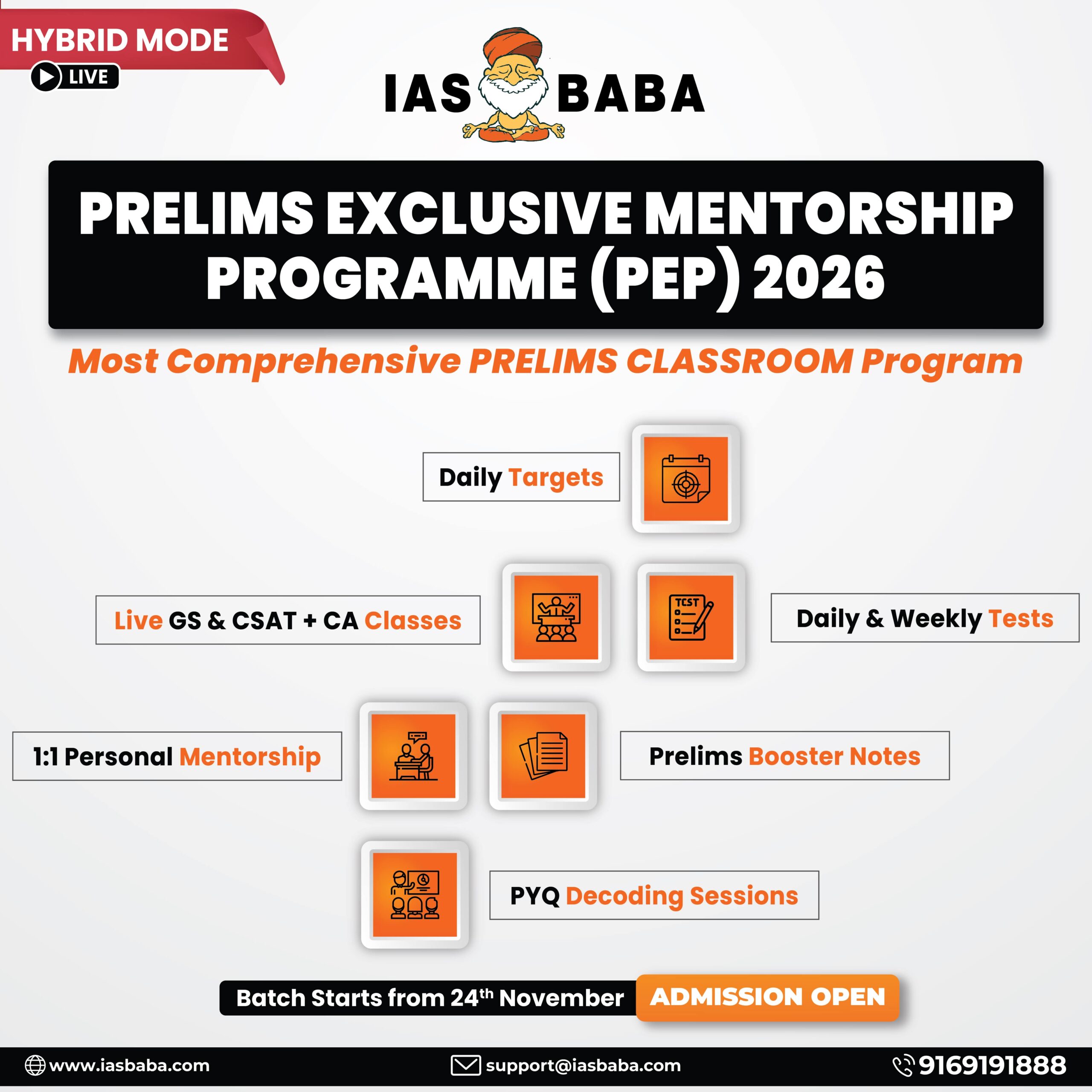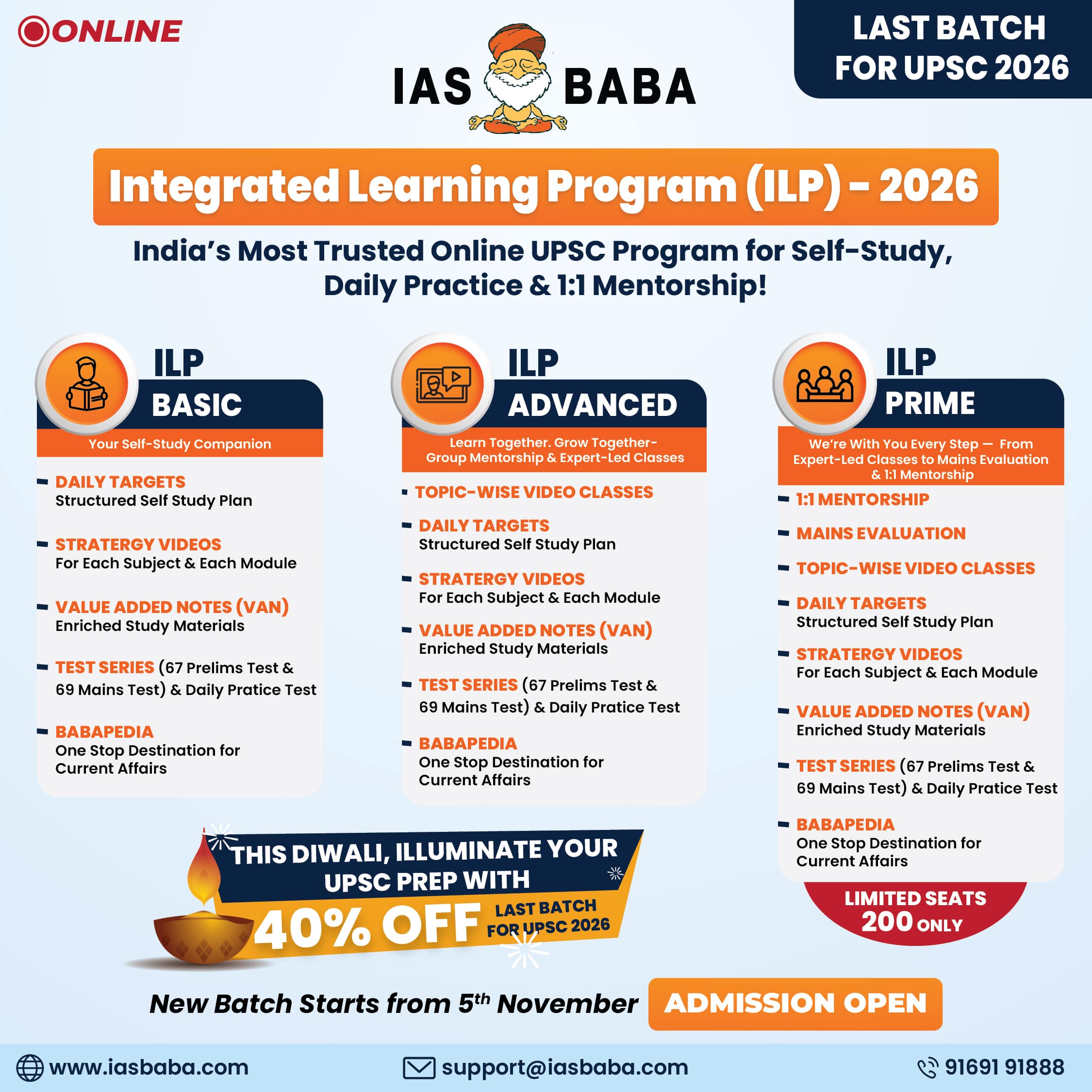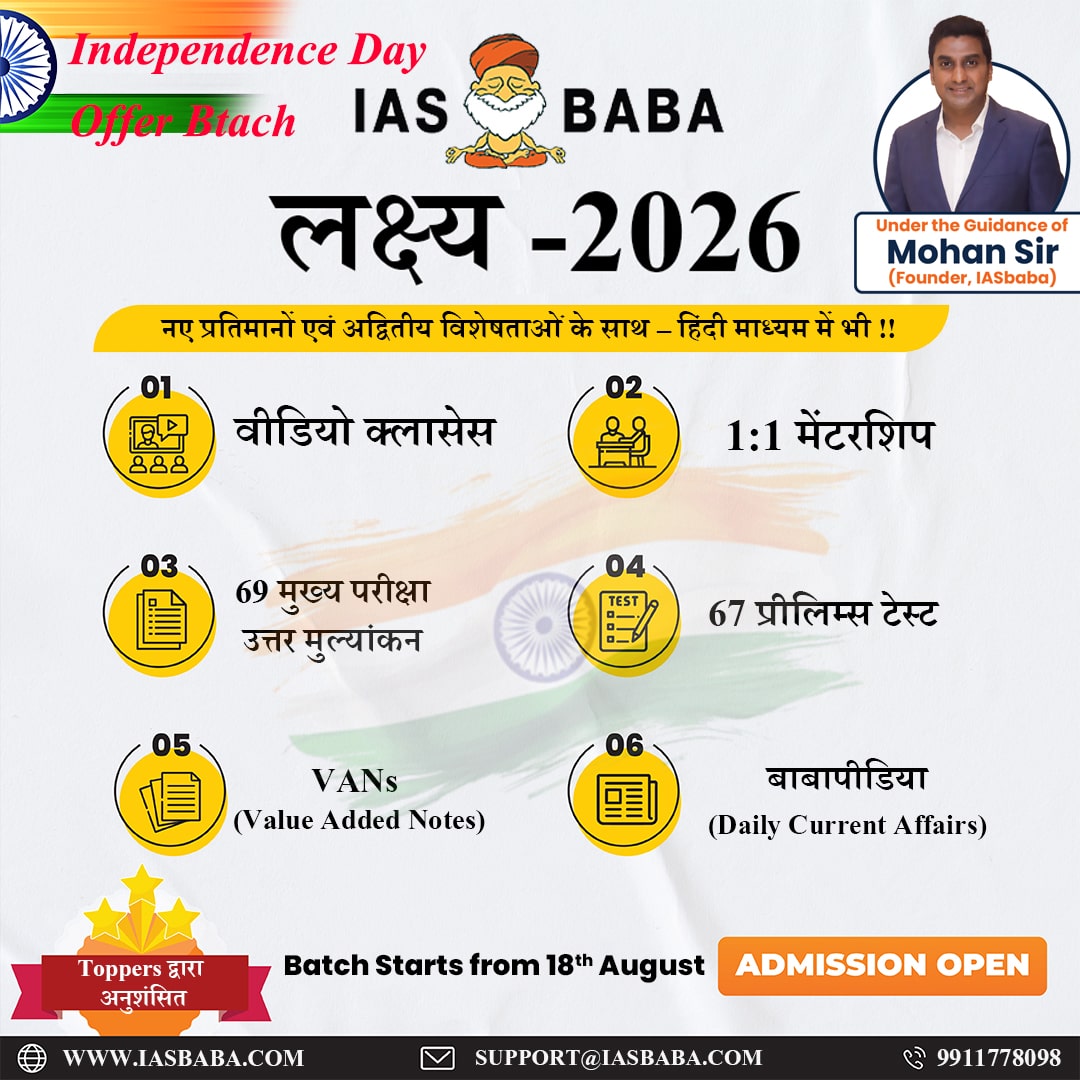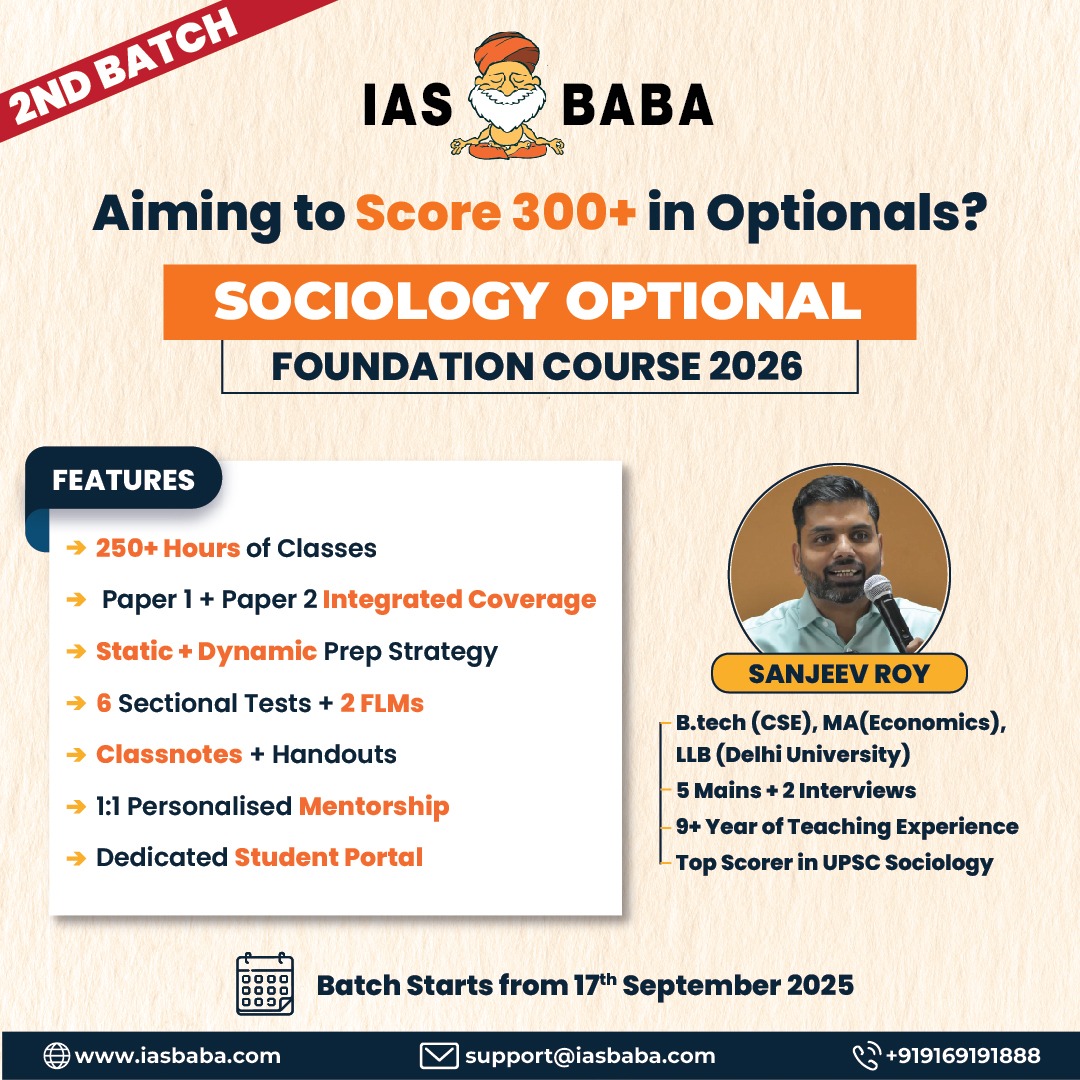IASbaba's Daily Current Affairs Analysis
Archives
(PRELIMS & MAINS Focus)
Category: NATIONAL
Context: Social stock exchange listing will become crucial for NGOs in the years to come.
Decoding the context: Despite progress, SSE struggles with awareness—only 2% of eligible NPOs are listed (2025 estimate). Smaller organizations lack resources to meet SEBI’s reporting standards, risking exclusion.
Learning Corner:
- The Social Stock Exchange (SSE) is a platform under the regulatory ambit of the Securities and Exchange Board of India (SEBI) that enables social enterprises—both non-profit organizations (NPOs) and for-profit social enterprises (FPEs)—to raise funds for social welfare initiatives.
- Proposed in the Union Budget 2019-20 by Finance Minister Nirmala Sitharaman, SSE aims to channel capital market resources toward inclusive growth and financial inclusion.
- It operates as a segment within existing stock exchanges like the Bombay Stock Exchange (BSE) and National Stock Exchange (NSE), with NSE listing its first NPO, Bengaluru-based Unnati Foundation, in 2023.
Key Features
- Eligibility: Social enterprises must focus on 16 broad social objectives, including eradicating poverty, promoting healthcare, education, gender equality, and environmental sustainability.
- Corporate foundations, political/religious organizations, and infrastructure companies (except affordable housing) are not eligible to be listed on the SSE.
- Fundraising Instruments:
- NPOs can issue ZCZP instruments, which do not offer financial returns but are aimed at achieving social outcomes. Additionally, NPOs can receive donations and may benefit from mutual fund schemes designed for social impact investments.
- FPEs can issue equity, debt, or access Social Venture Funds (SVFs) under Alternative Investment Funds (AIFs).
- Reporting Requirements: NPOs must submit fund utilization statements within 45 days post-quarter and an Annual Impact Report (AIR) within 90 days post-financial year, detailing social impact. FPEs must comply with SEBI’s listing norms and social impact reporting.
- Investor Benefits: Investments in NPOs listed on SSE qualify for Section 80G tax deductions, and corporate investments count toward Corporate Social Responsibility (CSR) obligations.
Progress and Developments (2025)
- NSE’s SSE segment, operational since 2023, allows contributions starting at ₹1,000, democratizing philanthropy.
- As of 2025, SSE has listed over 50 social enterprises, raising ₹500 crore, with a focus on education and healthcare.
- A Capacity Building Fund (₹100 crore), supported by NABARD and SIDBI, aids NPOs in meeting reporting standards, addressing capacity gaps for smaller organizations.
Significance
- Social Impact: SSE bridges funding gaps for India’s NPOs, enabling scalable solutions for SDGs like poverty alleviation (SDG 1), health (SDG 3), and education (SDG 4).
- Economic Inclusion: By leveraging capital markets, SSE fosters financial inclusion, supporting Atmanirbhar Bharat and reducing reliance on foreign aid.
- Transparency: SSE ensures accountability through mandatory impact reporting, addressing misuse of CSR funds.
Source : The Hindu
Category: GEOGRAPHY
Context: Sand mining in the Chambal River region is a major environmental concern, particularly in the states of Madhya Pradesh, Rajasthan and Uttar Pradesh.
Decoding the context: The extracted sand is in high demand for the booming construction industry, leading to unchecked exploitation of riverbeds. This activity has disrupted the habitat of wildlife, led to increased erosion, and significantly altered the river’s natural flow.
Learning Corner:
- The Chambal River, a major tributary of the Yamuna, is one of India’s cleanest perennial rivers, flowing through Madhya Pradesh, Rajasthan, and Uttar Pradesh.
- Originating at Bhadakla Falls near Janapav Hills (843 m elevation) in Indore district, Madhya Pradesh, it stretches 1,024 km, joining the Yamuna in Jalaun district, Uttar Pradesh, as part of the Ganga drainage system.
- Historically known as Charmanvati (Mahabharata), it flows through Vindhyan scarplands, badlands, and ravines, forming deep gorges.
- Major dams include Gandhi Sagar, Rana Pratap Sagar, Jawahar Sagar, and Kota Barrage.
Ecological and Environmental Significance
- Biodiversity Hotspot:
- The Chambal hosts the National Chambal Sanctuary (NCS), a tri-state protected zone (5,400 sq. km) across Madhya Pradesh, Rajasthan, and Uttar Pradesh, established in 1978 under the Wildlife Protection Act, 1972.
- It is a critical habitat for endangered species like the gharial (77% of global population) , Gangetic dolphin, Indian skimmer, red-crowned roofed turtle, and mugger crocodiles.
Environmental Concerns: Sand Mining and Its Impacts
- Despite a Supreme Court ban (2006) on mining in the NCS, the practice persists.
- Wildlife Disruption: Sand mining destroys nesting and basking sites of gharials, turtles, and birds like the Indian skimmer. The Gangetic dolphin faces habitat loss due to altered riverbeds and increased turbidity.
- Erosion and River Flow Alteration: Excessive dredging deepens riverbeds, increases erosion, and changes the river’s natural course, leading to flooding risks during monsoons.
- Water Scarcity: Reduced environmental flow, exacerbated by upstream dams (e.g., Kota Barrage) and sand mining, lowers water levels, especially in summer.
Source : Down To Earth
Category: ENVIRONMENT
Context: In Maharashtra’s Kadbanwadi grassland, the already endangered Indian grey wolf is now at an added risk from dogs attacking their pups or weak members of the pack.
Decoding the context: The Indian grey wolf is considered the guardian of the Kadbanwadi grassland. As an apex predator, it indicates the health of the ecosystem, regulating the numbers of smaller predators and herbivores.
Learning Corner:
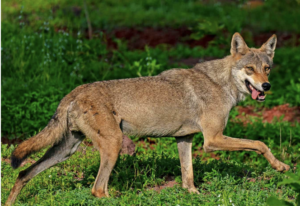
- The Indian Grey Wolf (Canis lupus pallipes), a subspecies of the grey wolf, is an apex predator in India’s grasslands, scrublands, and semi-arid ecosystems.
- Distribution: Found from Southwest Asia to the Indian subcontinent, including Maharashtra, Rajasthan, Gujarat, Karnataka, and parts of West Bengal, Odisha, and Jharkhand.
Ecological Role and Habitat
- Role: As an apex predator, it regulates populations of smaller predators and herbivores (e.g., chinkara, blackbuck), maintaining ecosystem balance.
- Habitat: Prefers open natural ecosystems (ONEs) like savanna grasslands, scrublands, and semi-arid regions, thriving in warmer conditions.
- Behavior: Nocturnal, hunts from dusk to dawn, lives in small packs of 6–8, monogamous, less vocal than other wolf species.
Conservation
- IUCN Status: Endangered (Red List).
- Legal Protection: Listed under Schedule I of the Wildlife Protection Act, 2022, and Appendix I of CITES for curbing illegal trade.
- Bankapur Wolf Sanctuary (Karnataka, 2025) and Mahuadanr Wolf Sanctuary (Jharkhand) are dedicated to wolf conservation
Source : The Hindu
Category: GEOGRAPHY
Context: In FY 2024-25, Major Ports registered an impressive annual growth rate of 4.3% in cargo handling, increasing from 819 million tonnes in FY 2023-24 to ~855 million tonnes in FY 2024-25.
Decoding the context: Among commodities handled at Major Ports, Petroleum, Oil, and Lubricants (POL)—including crude, petroleum products, and LPG/LNG—led the charts with a volume of 254.5 million tonnes (29.8%), followed by container traffic at 193.5 million tonnes (22.6%), coal at 186.6 million tonnes (21.8%), and other cargo categories such as iron ore, pellets, fertilizers, and more in FY 2024-25.
Learning Corner:
- There are 12 Major Ports wholly-owned by the Government of India and governed by the provisions of the Major Port Authorities Act, 2021. These are Deendayal Port, Mumbai Port, Jawaharlal Nehru Port, Mormugao Port, New Mangalore Port, Cochin Port, V.O. Chidambaranar Port, Chennai Port, Kamarajar Port, Visakhapatnam Port, Paradip Port and Syama Prasad Mookerjee Port.
- Governed by: Major Port Authorities Act, 2021 (replaced Major Port Trusts Act, 1963).
- Administered by: Ministry of Ports, Shipping and Waterways.
- Coastal coverage: 9 coastal states.
West Coast Ports
| Port | State | Key Points |
| Kandla (Deendayal Port) | Gujarat | One of the largest Indian port by volume of cargo handled; |
| Mumbai | Maharashtra | Natural harbor; largest container traffic; oldest port. |
| Jawaharlal Nehru Port (JNPT) | Maharashtra | Also called Nhava Sheva; one of the largest container port of India. |
| Mormugao | Goa | Specializes in iron ore export. |
| New Mangalore | Karnataka | Handles fertilizers, petroleum, iron ore. |
| Cochin (Kochi) | Kerala | All-weather, natural harbor; international cruise terminal; LNG terminal at Puthuvypeen. |
East Coast Ports
| Port | State | Key Points |
| Chennai | Tamil Nadu | Oldest artificial port; handles automobiles, containers. |
| Ennore (Kamarajar Port Ltd.) | Tamil Nadu | India’s only major corporate port. |
| Tuticorin (V.O. Chidambaranar Port) | Tamil Nadu | Shallow bay; handles fertilizers, coal, petroleum. |
| Visakhapatnam | Andhra Pradesh | Deep port; handles bulk cargo, coal, iron ore. |
| Paradip | Odisha | Major bulk cargo port (especially iron ore and coal). |
| Kolkata (Syama Prasad Mookerjee Port) | West Bengal | India’s only riverine major port; handles jute, tea, coal. |
Source : PIB
Category: POLITY
Context: Justice Bhushan Ramkrishna Gavai was sworn in by President Droupadi Murmu as the 52nd Chief Justice of India at the Rashtrapati Bhavan.
Decoding the context: Known as a bold and decisive judge who speaks his mind, Chief Justice Gavai’s tenure may see important hearings in the challenges to the Places of Worship Act and the Waqf (Amendment) Act of 2025.
Learning Corner:
- Article 124(1) of the Indian Constitution provides for a Supreme Court with a Chief Justice of India and other judges as appointed by the President.
- The CJI is the head of the judiciary in India and the supreme judicial authority.
Appointment:
- Appointed by the President of India under Article 124(2).
- By convention, the senior-most judge of the Supreme Court is appointed as the CJI.
- The Law Ministry seeks recommendation from the outgoing CJI for their successor.
Tenure:
- No fixed term.
- Holds office until the age of 65 years [Article 124(2)].
- Can resign (to the President), be impeached (under Article 124(4)), or retire upon reaching age limit.
- Removal: Through a process of impeachment as per Article 124(4) by Parliament on grounds of proved misbehavior or incapacity.
- Oath: Administered the oath by the President of India under Third Schedule of the Constitution.
Powers and Functions:
- Allocates cases and benches in the Supreme Court.
- Supervises the functioning of the Supreme Court.
- Has administrative control over the judiciary.
- Plays a crucial role in appointments and transfers of High Court judges (as part of the Collegium System).
Source : The Hindu
Practice MCQs
Q1. With reference to the Chief Justice of India (CJI), consider the following statements:
- The Chief Justice of India is appointed by the President under Article 124(2) of the Constitution.
- There is a fixed term of 5 years for the office of the Chief Justice of India.
- The CJI can be removed from office by the President on the recommendation of the Vice-President.
- By convention, the senior-most judge of the Supreme Court is appointed as the Chief Justice of India.
Which of the statements given above is/are correct?
A. 1 and 4 only
B. 2 and 3 only
C. 1, 2, and 4 only
D. 1, 3, and 4 only
Q2. Which of the following statements regarding India’s major ports is/are correct?
- Deendayal Port is located on the eastern coast of India and is a major container port.
- Paradip Port is the first major port built on the east coast after independence.
- Jawaharlal Nehru Port (JNPT) is India’s smallest container port.
Select the correct answer using the code below:
A. 1 and 2 only
B. 2 only
C. 1 and 3 only
D. 1, 2 and 3
Q3. With reference to the Indian Grey Wolf, consider the following statements:
- It is classified as a Schedule I species under the Wildlife Protection Act, 1972.
- It is found primarily in alpine and temperate forest ecosystems of the Himalayas.
- The Indian grey wolf plays a critical role as an apex predator in dryland ecosystems.
Which of the statements given above is/are correct?
- 1 and 3 only
B. 1 and 2 only
C. 2 and 3 only
D. 1, 2 and 3
Comment the answers to the above questions in the comment section below!!
ANSWERS FOR ’ Today’s – Daily Practice MCQs’ will be updated along with tomorrow’s Daily Current Affairs
ANSWERS FOR 13th May – Daily Practice MCQs
Q.1) – b
Q.2) – b
Q.3) – a

